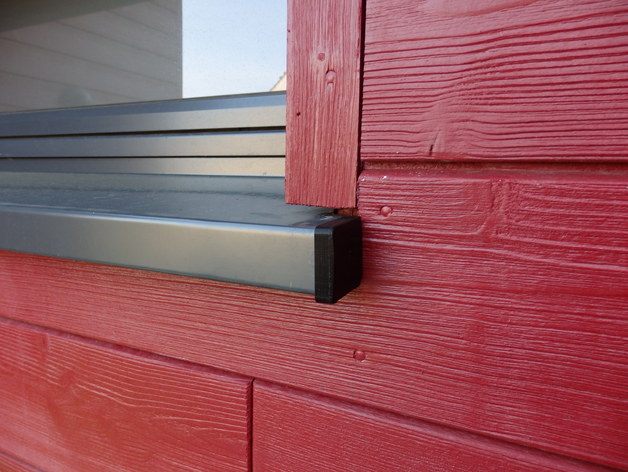
Angle aluminum window sills / Angle appuis de fenetre en aluminium
thingiverse
Aluminum window sills are a versatile component that can be finished with a cap assembly. A 0.06 layer thickness is standard for this type of finish, and the shell thickness is typically 1 unit. The fill rate is 20%, and the temperature for the process is 220 degrees Celsius. This aluminum window sill design requires a finishing touch, which can be achieved with a cap assembly. The layer thickness of this assembly should be approximately 0.06 units to ensure a proper fit. The shell thickness of the aluminum window sill is typically around 1 unit, and the fill rate for this process is about 20%. To complete the finishing process, the temperature needs to be set at 220 degrees Celsius. The design of aluminum window sills often requires a cap assembly to finish the support. This assembly should have a layer thickness of approximately 0.06 units to fit properly. The shell thickness of the aluminum window sill is usually around 1 unit, and the fill rate for this process is about 20%. For the finishing process, the temperature needs to be set at 220 degrees Celsius. Aluminum window sills are often finished with a cap assembly that supports the aluminum material. A layer thickness of 0.06 units is standard for this type of finish, and the shell thickness is typically around 1 unit. The fill rate for this process is about 20%, and the temperature needs to be set at 220 degrees Celsius. The finishing touch for aluminum window sills can be achieved with a cap assembly that has a layer thickness of approximately 0.06 units. The shell thickness of the aluminum window sill is usually around 1 unit, and the fill rate for this process is about 20%. For the final step, the temperature needs to be set at 220 degrees Celsius. Aluminum window sills can be finished with a cap assembly that has a layer thickness of approximately 0.06 units. The shell thickness of the aluminum window sill is typically around 1 unit, and the fill rate for this process is about 20%. To complete the finishing process, the temperature needs to be set at 220 degrees Celsius. The design of aluminum window sills often requires a cap assembly that finishes the support. This assembly should have a layer thickness of approximately 0.06 units to fit properly. The shell thickness of the aluminum window sill is usually around 1 unit, and the fill rate for this process is about 20%. For the finishing step, the temperature needs to be set at 220 degrees Celsius. This cap assembly can finish your aluminum window sills with a layer thickness of approximately 0.06 units. The shell thickness of the aluminum window sill is typically around 1 unit, and the fill rate for this process is about 20%. To complete the finishing step, the temperature needs to be set at 220 degrees Celsius. Aluminum window sills require a cap assembly that has a layer thickness of approximately 0.06 units to finish the support. The shell thickness of the aluminum window sill is usually around 1 unit, and the fill rate for this process is about 20%. For the final step, the temperature needs to be set at 220 degrees Celsius. The finishing touch for aluminum window sills can be achieved with a cap assembly that has a layer thickness of approximately 0.06 units. The shell thickness of the aluminum window sill is typically around 1 unit, and the fill rate for this process is about 20%. To complete the finishing step, the temperature needs to be set at 220 degrees Celsius. You can download the design of aluminum window sills and their cap assembly from the Cults3D website. The link is available below: https://cults3d.com/en/3d-model/design/aluminum-window-sills-and-cap-assembly
With this file you will be able to print Angle aluminum window sills / Angle appuis de fenetre en aluminium with your 3D printer. Click on the button and save the file on your computer to work, edit or customize your design. You can also find more 3D designs for printers on Angle aluminum window sills / Angle appuis de fenetre en aluminium.
